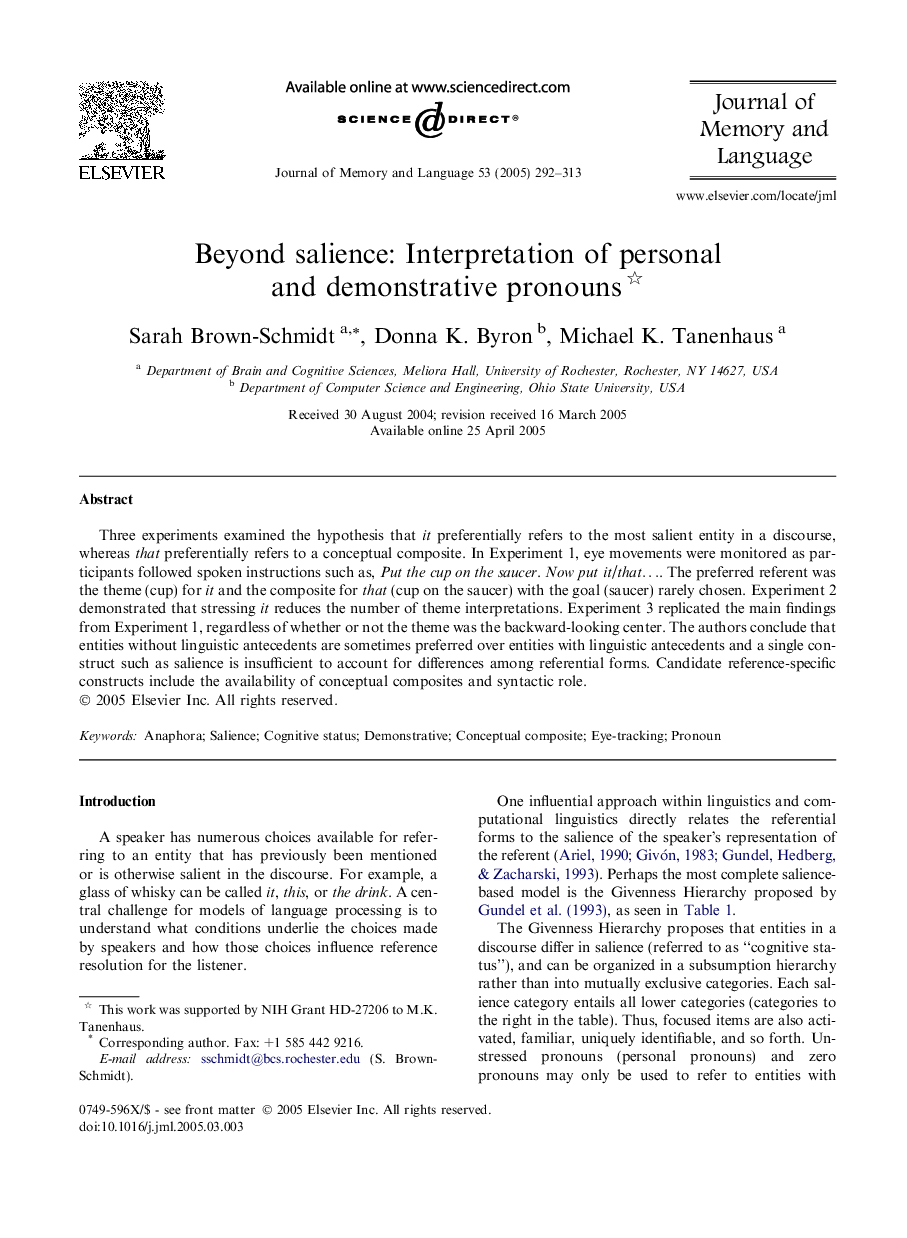| Article ID | Journal | Published Year | Pages | File Type |
|---|---|---|---|---|
| 10459804 | Journal of Memory and Language | 2005 | 22 Pages |
Abstract
Three experiments examined the hypothesis that it preferentially refers to the most salient entity in a discourse, whereas that preferentially refers to a conceptual composite. In Experiment 1, eye movements were monitored as participants followed spoken instructions such as, Put the cup on the saucer. Now put it/thatâ¦. The preferred referent was the theme (cup) for it and the composite for that (cup on the saucer) with the goal (saucer) rarely chosen. Experiment 2 demonstrated that stressing it reduces the number of theme interpretations. Experiment 3 replicated the main findings from Experiment 1, regardless of whether or not the theme was the backward-looking center. The authors conclude that entities without linguistic antecedents are sometimes preferred over entities with linguistic antecedents and a single construct such as salience is insufficient to account for differences among referential forms. Candidate reference-specific constructs include the availability of conceptual composites and syntactic role.
Related Topics
Life Sciences
Neuroscience
Cognitive Neuroscience
Authors
Sarah Brown-Schmidt, Donna K. Byron, Michael K. Tanenhaus,
